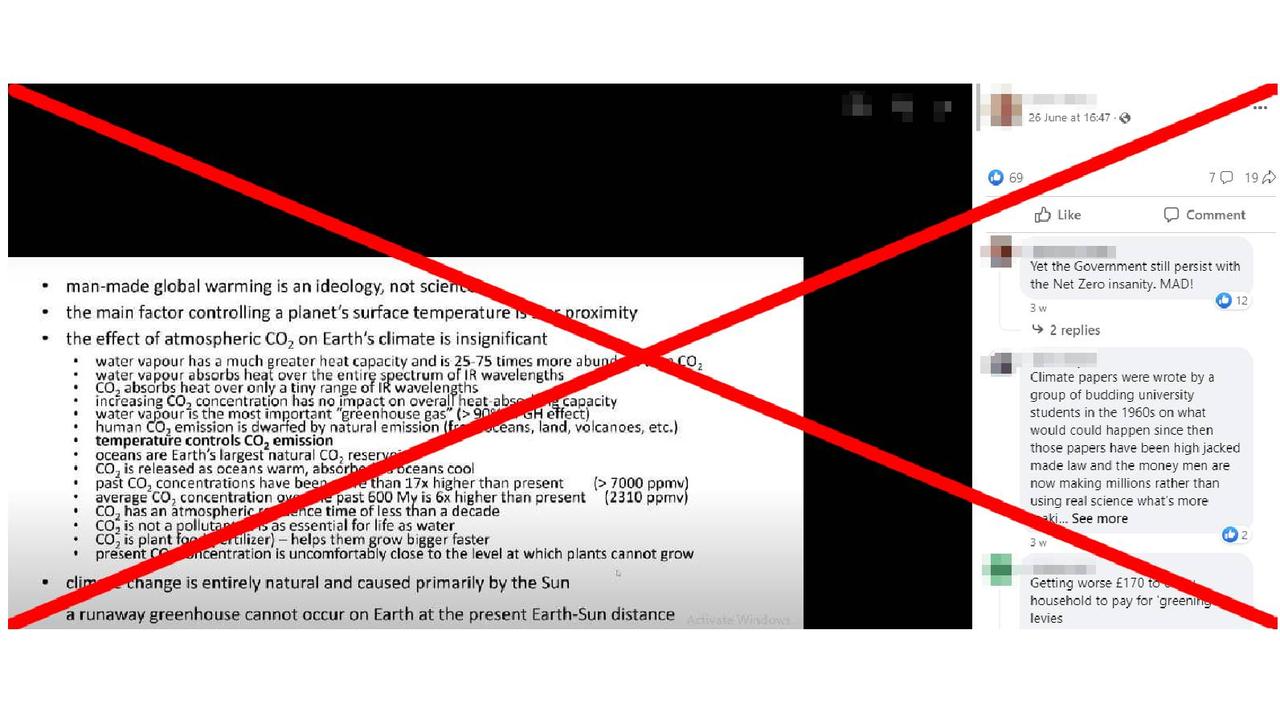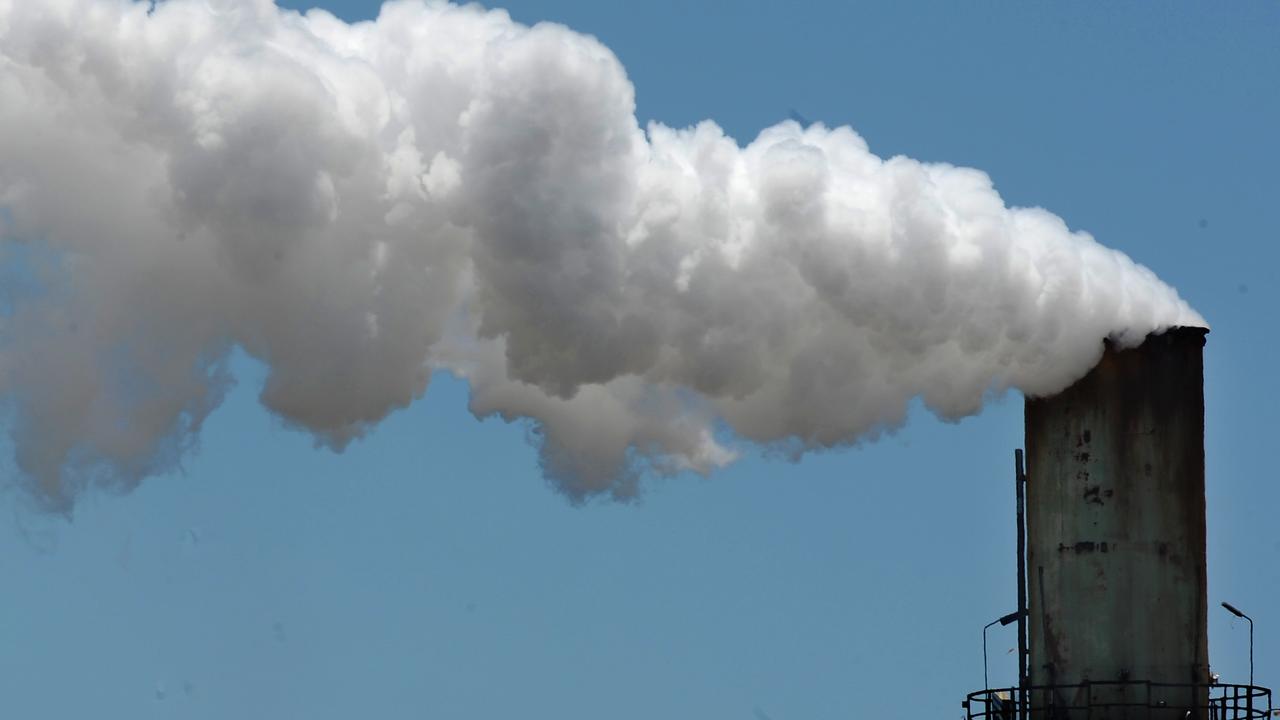WHAT WAS CLAIMED
Carbon dioxide has an atmospheric residence time of less than a decade.
OUR VERDICT
False. Carbon dioxide stays in the atmosphere for up to thousands of years.
A climate change sceptic has claimed carbon dioxide has an insignificant effect on the climate because the greenhouse gas has an atmospheric lifetime of less than a decade.
This is false. Experts told AAP FactCheck that while many complex processes affect the atmospheric residence time of carbon dioxide, emissions can stay in the air for thousands of years.
This Facebook post (archived here) makes the claim among a list of points challenging the consensus on human-caused global warming.
"CO2 has an atmospheric residence time of less than a decade," the graphic in the post says.

Dr Pushker A. Kharecha, a climate scientist at Columbia University, said there are many different physical and biological processes on land and in the ocean that affect global atmospheric CO2 levels.
"These processes operate on widely different time scales - ranging from years to millennia - thus, we can't reduce the residence time to one number as that simply isn't consistent with the evidence," he told AAP FactCheck in an email.
David Griffith, an emeritus professor at the University of Wollongong's Centre for Atmospheric Chemistry, also dismissed the premise of the claim.
"There is no single lifetime for CO2 in the atmosphere because it is removed by several processes with different lifetimes," he told AAP FactCheck.
Nicholas Deutscher, an atmospheric scientist also at the University of Wollongong, said parts of CO2 emissions will be quickly removed from the atmosphere by carbon sinks.
"Some molecules of CO2 that are emitted will be taken up by plants or (the) ocean relatively quickly, which could be within hours/days/weeks," he told AAP Factcheck in an email.

Dr Deutscher explained the residence time of CO2 is generally about 100 years, but molecules that don't get absorbed by plants or the ocean can stay in the atmosphere for much longer.
"On an annual basis, about 50 per cent stays in the atmosphere, where there is no common destruction process," he said.
Dr Kharecha said a fraction of carbon emissions remain in the air for thousands of years.
"However that fraction is significant and thus will continue to affect global climate," he said.
He pointed to this 2009 study which used various models to estimate the lifetime of atmospheric CO2.

The graphs on page nine illustrate the atmospheric lifetimes of CO2 particles from pulses of 1000 and 5000 petagrams over a 10,000-year period.
"A reasonable way to summarise all of this is that most of a given CO2 emission gets removed within a century or two, but a significant fraction (around 10-30 per cent, depending on the size of the emission, model assumptions, etc.) stays in the air for many thousands of years," Dr Kharecha said of the study's findings.
While estimates vary on how long CO2 stays in the atmosphere, evidence from NASA, the US EPA and the United Nations' Intergovernmental Panel on Climate Change (IPCC) state it is not less than a decade.
Some other claims in the post, including that water vapour is responsible for 90 per cent of the greenhouse effect and that climate change is caused by the sun, have previously been found to be false by AAP FactCheck here and here.
The role of human CO2 emissions in driving global warming has been explained here, here and here.
The Verdict
The claim that CO2 has an atmospheric residence time of less than a decade is false.
Experts told AAP FactCheck about 50 per cent of annual CO2 emissions stay in the atmosphere after the rest has been absorbed by carbon sinks. The remaining amount has a lifetime ranging from a century to thousands of years.
False – The claim is inaccurate.
AAP FactCheck is an accredited member of the International Fact-Checking Network. To keep up with our latest fact checks, follow us on Facebook, Twitter and Instagram.












